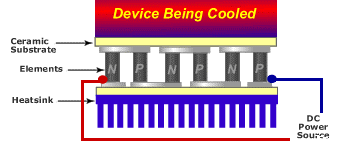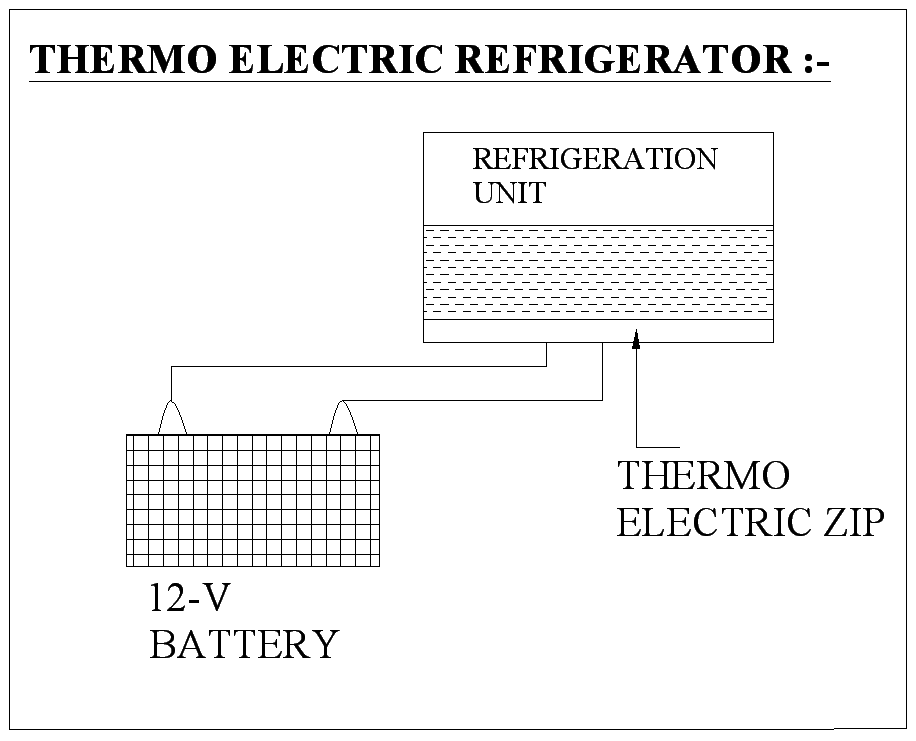Thermoelectric Refrigeration | Mechanical Project Abstract
SYNOPSIS
Thermoelectric couples are solid-state devices capable of generating electrical power from a temperature gradient, known as the Seebeck effect, or converting electrical energy into a temperature gradient, known as the Peltier effect.
A typical thermoelectric module is composed of two ceramic substrates that serve as a housing and electrical insulation for P-type and N-type (typically Bismuth Telluride) elements between the substrates. Heat is absorbed at the cold junction by electrons as they pass from a low energy level in the p-type element, to a higher energy level in the n-type element. At the hot junction, energy is expelled to a thermal sink as electrons move from a high energy element to a lower energy element. A module contains several P-N couples that are connected electrically in series and thermally in parallel.

To assist the thermal designer in modeling thermoelectric coolers or Peltier modules, C&R Techologies’ tool suite provides built in routines for modeling either standard Bismuth Telluride coolers or modules manufactured from alternative semiconductor materials (in which case the user must provide the Seebeck coefficient, electrical resistivity, and thermal conductivity). The routines allow SINDA/FLUINT to apply the appropriate source terms and internally adjust temperatures as needed in both steady state and transient simulations. The family of TEC routines provide the designer the ability to model single stage or multi-stage coolers, and calculate valuable sizing information regarding cooler performance.
The subroutine TEC1 provides simple 1D modeling methods for use in SINDA/FLUINT while the routine TEC2 provides 3D modeling of the device in SINDA/FLUINT and/or our CAD-based Thermal Desktop GUI.
INTRODUCTION
Refrigeration is the process of removing heat from a substance under controlled conditions. Refrigerator is a reversed heat engine or a heat pump which pumps heat from a cold body and delivers it to a hot body. The substance which works in a heat pump to extract from a cold body and to deliver it to a hot body is called refrigerant. Refrigeration is a accomplished by various methods, such as the vapour compression system, absorption system, steam jet refrigeration cycle The vapour compression system of refrigeration cycle.
Working Diagram Of Project:

ADVANTAGES
- Simple in construction
- This system is noiseless in operation
- It is portable, so it can be transferred easily from one place to other place
- Power consumption is less
- Maintenance cost is low
DISADVANTAGES
- It does not purify air
- There may be changing of coil once in a year










Post Comment
You must be logged in to post a comment.